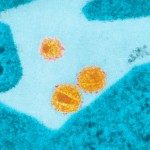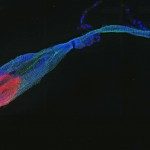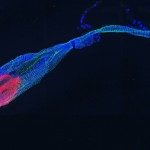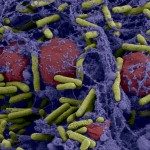Link to Pubmed [PMID] – 18436740
Blood 2008 Jul;112(1):34-44
WHIM (warts, hypogammaglobulinemia, infections, and myelokathexis) syndrome is an immune deficiency linked in many cases to heterozygous mutations causing truncations in the cytoplasmic tail of CXC chemokine receptor 4 (CXCR4). Leukocytes expressing truncated CXCR4 display enhanced responses to the receptor ligand CXCL12, including chemotaxis, which likely impair their trafficking and contribute to the immunohematologic clinical manifestations of the syndrome. CXCR4 desensitization and endocytosis are dependent on beta-arrestin (betaarr) recruitment to the cytoplasmic tail, so that the truncated CXCR4 are refractory to these processes and so have enhanced G protein-dependent signaling. Here, we show that the augmented responsiveness of WHIM leukocytes is also accounted for by enhanced betaarr2-dependent signaling downstream of the truncated CXCR4 receptor. Indeed, the WHIM-associated receptor CXCR4(1013) maintains association with betaarr2 and triggers augmented and prolonged betaarr2-dependent signaling, as revealed by ERK1/2 phosphorylation kinetics. Evidence is also provided that CXCR4(1013)-mediated chemotaxis critically requires betaarr2, and disrupting the SHSK motif in the third intracellular loop of CXCR4(1013) abrogates betaarr2-mediated signaling, but not coupling to G proteins, and normalizes chemotaxis. We also demonstrate that CXCR4(1013) spontaneously forms heterodimers with wild-type CXCR4. Accordingly, we propose a model where enhanced functional interactions between betaarr2 and receptor dimers account for the altered responsiveness of WHIM leukocytes to CXCL12.



